I found this schematic (in Spanish) and annotated it with my interpretation. Anyone care to correct me or add?

- 1
- 1
-
"decouple" = couple it connects the two stages together. Decoupling capacitors would be from +/-VCC to GND. – Mar 14 '20 at 11:50
-
Texas Instruments say that opamp 4558 is like dual 741 but without offset null inputs. Forget it. 741 type opamps are so slow that music gets a big amount of clipping in transients (=TIM distortion). Their noise levels are hopeless for preamps and equalizers. 741 pumped the transistor sound to extreme. I have never met worse sounding audio mixers than those which had 741 opamps as the basic component. – Mar 14 '20 at 12:38
3 Answers
- the purpose of the 0.1 µF input capacitor and the 200 kΩ resistor is not a HP filter, but an AC input coupling; if it was standalone, it would be a high-pass filter with a ~8 Hz cutoff frequency, indeed. But here, I'd really call it "AC input coupling"
- A decoupling capacitor is something different. This is an AC coupling capacitor
- What you label "LP filter" is part of the band pass filter; I mean, it's even labeled "medios".
- 200 kΩ is not the input impedance Anyways, for an audio circuit, the exact input impedance doesn't matter. It's "in the couple kΩ". (by the way, that's not very good for a preamp.)
Generally, regarding this circuit:
- Random circuits found on random websites are bad, on average. They are usually the result of amateurs copying circuits they found somewhere without much understanding; engineers typically have their go-to books and would just refer their colleagues to these; little sense to write the millionth blog post about a high input impedance amplifier circuit. This circuit is no exception: it's not a good circuit, and it seems to be underdocumented
- Never trust a schematic where the components don't have names. Literally nobody who works professionally with electronics does that for the last ca ~30 years. That dates the original source of the circuit your Spanish website copied, too, by the way. Why is it bad? Because a) it's impossible to talk about circuits when you have to say "the second 200 kΩ resistor from the right", instead of "R4". And, b): every tool to draw schematics that you'd actually want to build on a PCB assigns component names, automatically. It's not something you even have to think about.
- This circuit, being as said above, a copy of something that's at least 30 years old, uses a really, really bad opamp from 1976. Please use a modern Opamp with lower noise, better voltage ranges, lower power consumption, better supply noise rejection, lower leakage/biases…
- Adjusting the volume with a pot at the output is an unusual choice. I'd even call it bad design! (it doesn't have to be bad design if this was actually a preamplifier for another stage of relatively high input impedance, but that's not the case here at all: There's a massive output capacitor, which indicates there's a low-impedance load supposed to be connected here).
In essence, this is a bad schematic, and where you've got it from is probably a source of bad electronics. Get a good book; for example, there's a popular book on Audio Amplifiers by Douglas Self, and Texas Instruments has a good guide to opamps and opamp circuits.
- 88,280
- 5
- 131
- 237
-
1One of the sources of these "bad schematics" is from "back when" we didn't have all these fancy ICs that cost near-to-nothing. Transistors were expensive and opamps were horribly expensive and a lot of the schematics were intended for people who just wanted to "wire something up" and didn't want or care to understand anything. So the circuits were designed by good folks for the intended audience (hobbyist builders.) Then young folks stuff in new parts into these old circuits and think they've got a modern design. – jonk Mar 14 '20 at 18:46
The 200k is superfluous.
The 100k feedback resistor together with the inverting input stage makes a 'virtual ground' input stage, with essentially zero input impedance. The impedance then seen by the external signal is 5.1k. Any bias current required by the input stage is met through the 100k.
Your input HP filter is therefore the 100n + 5.1k, which has a 3dB point of about 300 Hz. That's OK for telephony, but not for music.
The next 100n is a coupling capacitor. Decoupling capacitors go between rails and ground.
The 200k and 470p appear at first glance to be a LPF, but they are only part of it. The other components round the second amplifier also have a frequency response, adjustable by a tone control.
- 158,152
- 3
- 173
- 387
-
1I was scratching my head *very* much what the purpose of the 200 kΩ resistor was. I was assuming it was just an artifact of a misled design attempt of "I want this thing to have some input impedance that's not that of the opamp", and I was red-herringed. You're right; this circuit has 5.1 kΩ input impedance, which is a little low for it's purpoted purpose as preamp. – Marcus Müller Mar 14 '20 at 12:16
-
2So, concluding, this thing has an input impedance that is too low, it cuts off psychoacoustically important regions below 300 Hz, it's got a strangely designed second stage filter and a stupid output attenuator. – Marcus Müller Mar 14 '20 at 12:17
If the signal source has a low output impedance then the HP filter is -3dB at 314Hz and the LP filter is -3dB at 4.0kHz. Telephone or AM radio sounds. Maybe it was used many years ago for an Electrik Geetar.
- 3,894
- 5
- 8